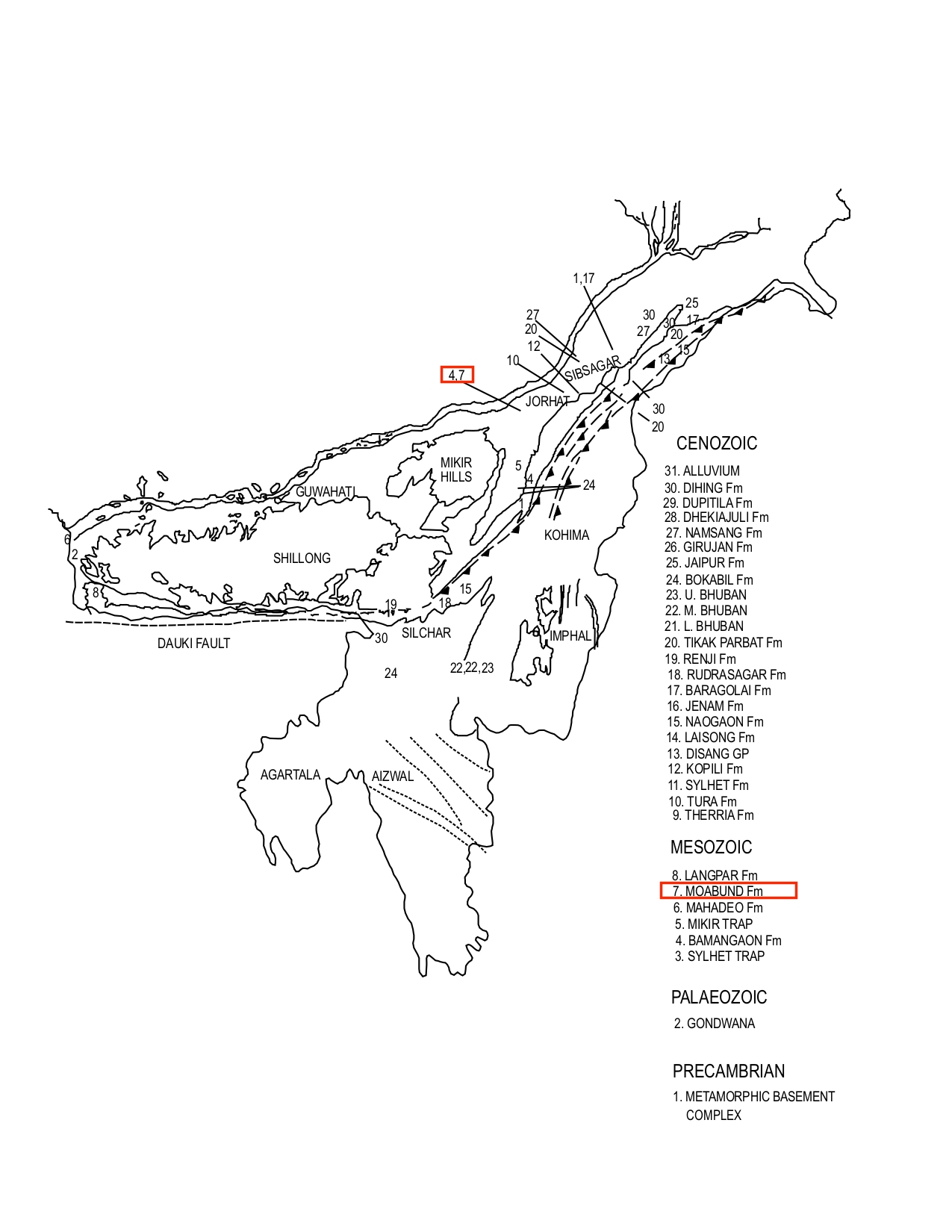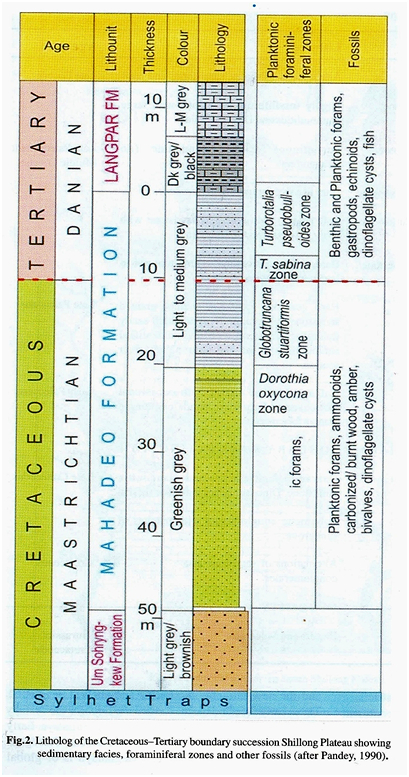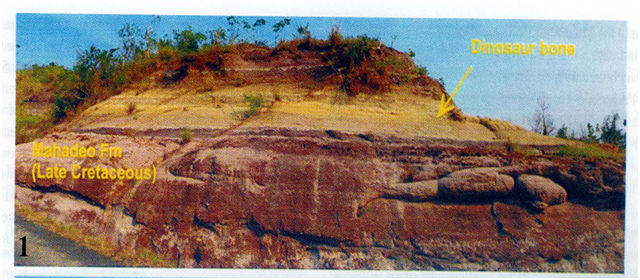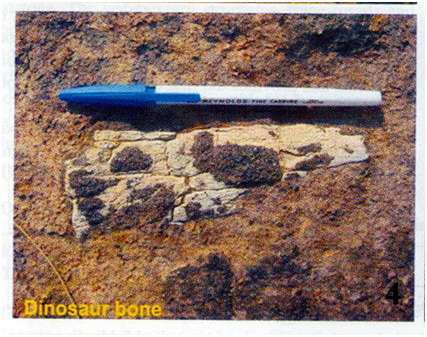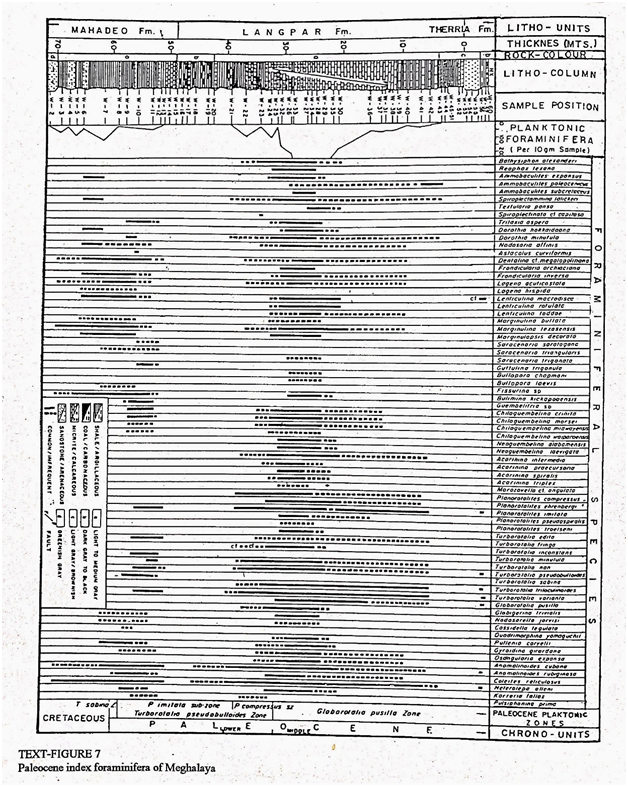Mahadeo Fm
Type Locality and Naming
Type section is near the Mahadev village about 8.5 km south of Cherrapunjee. [Original Publication: Medlicott, H. B., 1869. Geological Sketch of the Shillong Plateau, Mem. Geol. Surv. India vol. VII, pt. 1, pp. 151-207.]. Reference section: Um Sorhyngkew River Section
Synonyms: Medlicott originally proposed this litho-unit as Mahadeo band. However, Biswas (1962), Chakraborty et al (1974) considered it as a rock unit of formation rank. The original definition of Medlicott has retained with the rank of formation by Deshpande et al., 1993, (Pandey and Dave, 1998).
[Figure 1: Formation stratotypes of North East Basins (modified after Pandey and Dave, 1998)]
Lithology and Thickness
Conglomerate and coarse-grained sandstone. Type section lithology: The base of the Mahadeo Formation is characterized by presence of conglomerate beds which consists of boulders and pebbles of quartzite and trap, cemented in whitish calcareous sandy matrix. The conglomerates are overlain by purple or violet, massive sandstone with greenish blotches. Sandstones are medium to coarse grained, glauconitic, gritty and arkosic (Deshpande et al., 1993). Towards the top glauconite is absent and sandstones become dirty white and fine to medium grained. The outcrops of Mahadeo Formation are nearly horizontal in the north or plateau area whereas in the south, it shows gentle southerly dips forming a monocline structure. Maximum thickness of 370 m in the Barsura-Gumaghat road section. In UM Sohryngkew River section, it is 180 m.
[Figure 2: Litholog of the Cretaceous-Tertiary boundary succession Shillong Plateau showing sedimentary facies, foraminiferal zones and other fossils (after Pandey, 1990)]
[Figure 3: Dinosaur bone yielding section of Mahadeo Formation near Dirang (west Khasi Hills) (after Tewari et al., 2010)]
[Figure 4: Bone fragments in sandstone (after Tewari et al., 2010)]
Relationships and Distribution
Lower contact
Unconformable contact with the underlying Sylhet Trap Fm.
Upper contact
Unconformable contact with the overlying Tura Fm.
Regional extent
Garo Hills, Khasi & Jaintia Hills: Exposed in the South Shillong Plateau from Rongra River in the west till Lubha River towards east.
GeoJSON
Fossils
Upper Cretaceous molluscs and echinoids have been described by Spengler (1923) and Dasgupta (1929). Uncoiled Ammonites, Belemnites were also reported from Um Sohryngkew river section (Mullick et al., 1989). A good number of foraminifera are also reported for the formation, (Pandey, 1978; 1990).
[Figure 5: Paleocene index foraminifera of Meghalaya (after Pandey and Dave, 1996)]
Age
Depositional setting
Basal part fluvial and upper part marine.
Additional Information
